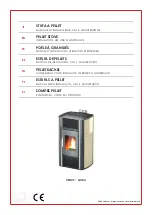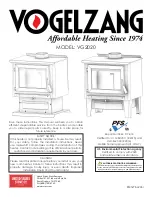
3
IMPORTANT SAFETY INFORMATION
ALWAYS
allow the appliance to cool before covering with patio cover.
ALWAYS
cover the appliance, with patio cover (if supplied), when not in use.
In the event the appliance has been exposed to water, tilt the appliance forward and allow water to drain
from the burners before attempting to ignite.
Use appliance only with LP (propane) gas and the regulator/valve assembly supplied. • Installation must
conform with local codes, or in their absence with National Fuel Gas Code, NFPA 54/ANSI Z223.1.
Handling and storage of LP cylinders must conform to LP Gas Code NFPA/ANSI 58. Appliance is not
for use in or on recreational vehicle and/or boats.
Before opening LP tank valve, check the coupling nut for tightness. When appliance is not in use, turn off
control knob and LP tank valve on supply cylinder.
NEVER
use LP tank if visibly rusted, damaged, or out of date.
If you notice grease or other hot material dripping from appliance onto valve, hose or regulator, turn off
gas supply at once. Determine the cause, correct, clean and inspect valve, hose and regulator before
continuing. Perform a leak test.
The regulator may make a humming or whistling noise during operation. This will not affect the safety or
use of appliance.
Clean and inspect the hose before each use of the appliance. If there is evidence of abrasion, wear, cuts
or leaks, the hose must be replaced prior to the appliance being put into operation. See product sheet for
hose & regulator information.
DO NOT
block holes in bottom or sides of appliance.
ALWAYS
close LP tank valve and remove coupling nut before moving LP tank form specified operating
position.
NEVER
store a spare LP tank under or near appliance or in enclosed areas.
NEVER
fill the cylinder
beyond 80% full. An overfilled spare LP tank is hazardous due to possible gas released from the safety
relief valve. Failure to follow these instructions exactly could cause a fire resulting in death or serious
injury.
If you see, smell, or hear escaping gas, immediately get away from the LP tank/appliance and call your
fire department.
Combustion by-products produced when using this product contain chemicals known to the State of
California to cause cancer, birth defects, or other reproductive harm.
Turn
OFF
all control knobs and LP tank valve. Turn coupling nut counterclockwise by hand only –
DO
NOT
use tools to disconnect. Install safety cap onto LP tank valve.
ALWAYS
use cap and strap supplied
with valve. Failure to use safety cap as directed may result in serious personal injury and/or property
A disconnected LP tank in storage or being transported must have a safety cap installed (as shown).
DO NOT
store an LP tank in enclosed spaces such as a carport garage, porch, covered patio or other
building.
NEVER
leave an LP tank inside a vehicle, which may become overheated by the sun.
Storage of an appliance indoors is permissible only if the cylinder is disconnected and removed from the
appliance.
Inspect and test the folding tables on the side to make sure they are locked.






























